Do you like Creamsicles? Dreamsicles? Orange-cream slushes at Sonic? Anything with orange and cream together?
I love them all. Orange + vanilla might seem like a weird combination if you’ve never had one of those frozen confections, but I promise it works. Which is why I was intrigued when I saw this cake on Rosie’s uber-amazing blog, Sweetapolita.
Not only is this cake delicious, it’s absolutely gorgeous. It does involve a lot of steps, so it’s not the perfect cake to make if you are pressed for time. But if you have a bit of time and are looking for something different, this is awesome.
It’s not super-duper orangey, either. You can taste the orange, especially in the frosting, but there’s a good bit of vanilla-cream and vanilla-cake flavor, too. You can up the orange flavor (and reduce your time commitment) by skipping the orange cream filling and making more orange buttercream to put in between the layers, though. Up to you.
I will tell you that this method of making cakes is a little different than what you may be used to. Instead of creaming the butter and sugar together first (like I do normally with cookies), you mix the dry ingredients up first and then add pieces of butter.
You also have to be pretty careful with the whipped cream filling. I think I left mine in the fridge a tiny bit too long, so it ended up a weird texture. But it didn’t really matter in the end, since you can’t tell when it’s hidden between the layers of cake. It still tasted good.
As much as I love the orange-cream combination, my favorite thing about this cake is the pastel swirl frosting. And you can totally use the frosting recipe and swirl method with your own cake recipe, if you’d prefer. I would recommend adding some orange zest and orange juice to the cake, though. Vitamin C, y’all.
So, before decorating the cake, you need to cover it with a thin layer of frosting to seal in the crumbs (so they don’t get all up in your pretty frosting). It doesn’t have to be pretty, it just has to cover the cake.
Aren’t those colors beautiful? They remind me of rainbow sherbet. Which also reminds me: This cake would probably be good with something raspberry in between the layers (like, maybe some raspberry jam and orange buttercream) instead of the orange whipped cream. Not as creamsicle-y, obviously, but still likely a good combination.
Definitely put some pieces of wax paper or parchment paper under the cake before you frost it so when you make a big mess (like I did), you can just pull the paper out and throw it away. I do make an effort to explain this method of decorating below, but I would highly recommend you watch Rosie’s video on her blog — it’s really helpful.
Then, just throw some sprinkles on top and serve!
I brought this one to work for my going-away baking bonanza, and it was definitely a hit. I was thinking about making it again for my birthday later this week… but I will probably try something new. In the meantime, I hope you like this!
Orange cream cake (Adapted from Sweetapolita, makes one three-layer 8- or 9-inch cake)
Cake
4 large eggs and 2 egg yolks, at room temperature (or at least not fresh from the fridge – try setting them out for an hour or so before you start)
1 cup whole milk, at room temperature
1/4 cup freshly squeezed orange juice (I used Valencia oranges)
3 cups cake flour
3/4 cup (12 tablespoons) cold unsalted butter
2 cups granulated sugar
1 tablespoon plus 1 teaspoon baking powder
1/2 teaspoon salt
Zest from 2-3 medium oranges
Once the eggs and milk have been sitting out for about an hour, preheat the oven to 350F. Squeeze the orange juice (it’s easier to get more juice from each if you roll the oranges on the counter before you cut them in half). Strain the juice to get rid of any seeds and pulp. It’s better to have a bit more than 1/4 cup than less.
Butter the bottoms and sides of three 8- or 9-inch round cake pans, then line the bottoms of the pans with parchment paper, butter that and dust the sides of the pans with flour (knock out the extra).
Sift the cake flour.
In a small bowl or medium measuring cup, break up the eggs and yolks with a fork. Stir the orange juice and milk together in a separate small bowl/measuring cup.
Cut the butter into small pieces of roughly equal size.
Whisk the flour, sugar, baking powder and salt together in the bowl of a stand mixer, using the paddle attachment. Keeping the mixer on low, add the butter pieces one at a time, a few seconds apart. Keep mixing until all of the butter is blended in and the mixture looks like sand, with no butter clumps.
Slowly add the milk-orange juice mixture to the flour mixture, then turn the mixer on medium speed and blend for four minutes. Turn the mixer off, scrape the sides of the bowl with a spatula, and then turn the mixer back on to low. Slowly add the egg mixture, then turn the mixer speed up to medium and blend for one minute.
Zest the oranges and carefully fold the zest into the batter using a spatula.
Pour the batter into the three pans, dividing it as evenly as possible (I find it’s easiest to use a food scale, but you could also measure it out in a measuring cup if you don’t have a scale).
Bake the cake layers for 20 to 25 minutes, switching their oven position around once in the middle to ensure even baking – until they’re golden brown and the centers bounce back if you press them gently with your finger. (You can also test them by sticking a toothpick into the center. If it comes out without any wet batter on it, the cake is done).
Allow the layers to cool for 15-20 minutes, then turn them over onto wire cooling racks and peel off the paper liners. Let the layers cool completely before assembling.
Orange cream filling
2 tablespoons cold water
2 teaspoons unflavored gelatin (one packet is enough)
2 cups cold heavy cream
1 cup powdered (confectioners’) sugar
zest from 1 medium orange
In a stainless steel bowl (a small one is fine, but the only one I have is my stand mixer bowl), pour in the cold water and sprinkle the gelatin over it. Stir and then let sit for at least 10 minutes (it should look gelatin-y when it’s ready).
Meanwhile, pour 1/3 cup of the heavy cream into a small heavy saucepan and heat until the liquid around the sides begins to bubble a bit. Stir the hot cream into the gelatin until the gelatin dissolves.
Put the hot gelatin mixture in the fridge, but open the fridge and stir the mixture every minute or so, until the mixture is cool (about eight minutes). Don’t let it set!
After the cream mixture is cool, beat the rest of the whipped cream, the powdered sugar and vanilla in a cold mixer bowl (you can use a hand-held mixer or the whisk attachment on a stand mixer).
Add the gelatin mixture very slowly, beating as you go, until the whipped cream is thick (it won’t hold stiff peaks, but it should be a spreadable consistency). Fold in the orange zest, then cover and store in the fridge until ready to assemble the cake.
Orange buttercream frosting
2 cups unsalted butter (let it sit on the counter for at least an hour, or longer)
1/4 cup (or a little more) freshly squeezed orange juice
4 1/2 cups or more powdered (confectioners’) sugar
Pink and peach gel food coloring (for assembly/decoration)
Assorted sprinkles
Cut the butter into pieces, then put it in the bowl of a stand mixer and beat, with the paddle attachment, on medium speed for several minutes, until the butter is very creamy and light.
Squeeze and strain the orange juice, to remove seeds and pulp.
Add the powdered sugar to the butter, about a cup at a time, beating on a low speed to combine. Add the orange juice and beat to combine, then increase the mixer speed to medium for several minutes, until the frosting is very light and fluffy.
To assemble the cake, place one layer (rounded side down) on a cake stand or plate. Put about 1 1/2 cups of the uncolored orange buttercream frosting in a pastry bag with a large piping tip (or just in a big plastic Ziploc0type bag with a hole cut in one of the bottom corners). Pipe the frosting around the very edge of the cake layer, then spread a generous amount of the orange cream filling in the center of the layer, spreading it to the frosting.
Place the next cake layer (top/rounded side down) on top of the first layer and repeat the frosting edge/orange cream filling process. Place the last cake layer (top/rounded side up) on top, then make sure the layers all aligned. If anything seems to be sliding around, put the cake in the refrigerator (with some kind of plastic or cover over it) for 20-30 minutes. Or, go ahead and spread a thin layer of the uncolored frosting all over the top and sides of the cake.
Refrigerate the cake for about 30 minutes, until the frosting is set. While it’s setting, divide the rest of the frosting into three equal parts. Tint one bowl of frosting bright pink (I think I used Americolor deep pink), one orange (I used a mix of Americolor peach and some Wilton orange) and one coral (a mixture of pink and orange/peach). You want the colors to be different enough that you will be able to see the gradient once you frost the cake.
To frost, I recommend watching this video first. Then, stir up the orange and glop a thick layer on the top of the cake (you want some kind of hanging off the edges). Next, stir up the hot pink frosting and spread a very thick layer on the bottom of the sides of the cake, extending about a third of the way up. Stir the coral and spread a thick layer on the middle/sides of the cake, close to but not quite touching the other colors.
Use a frosting spatula to carefully blend the edge of the coral and hot pink together, then wipe off the spatula and spread the coral so it extends all the way to the top (right under the orange). Wipe off the spatula again, then position it vertically and run it carefully around the sides of the cake, wiping occasionally, to blend the colors together and smooth the frosting. Be careful not to over blend or take too much frosting off. Finish by wiping the spatula off again, making sure the top is smooth and that the orange frosting is blended over the edge into the coral. Decorate with a variety of sprinkles.
Store the cake in the fridge, covered, but allow to sit at room temperature for about an hour before serving.


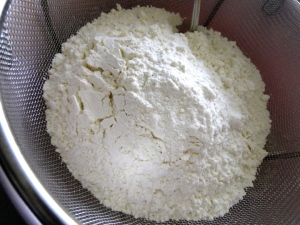
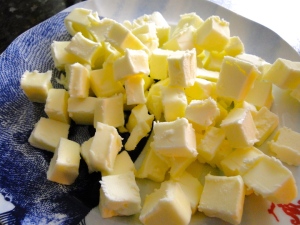
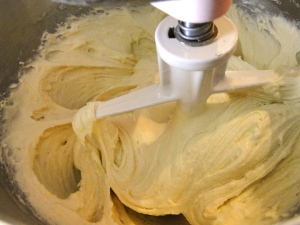
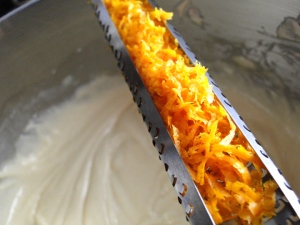

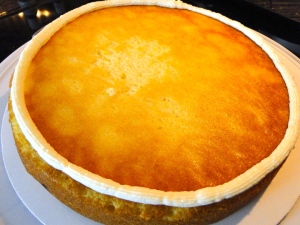
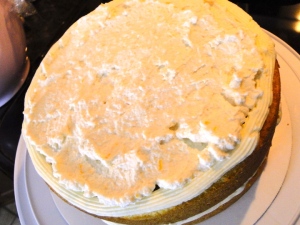

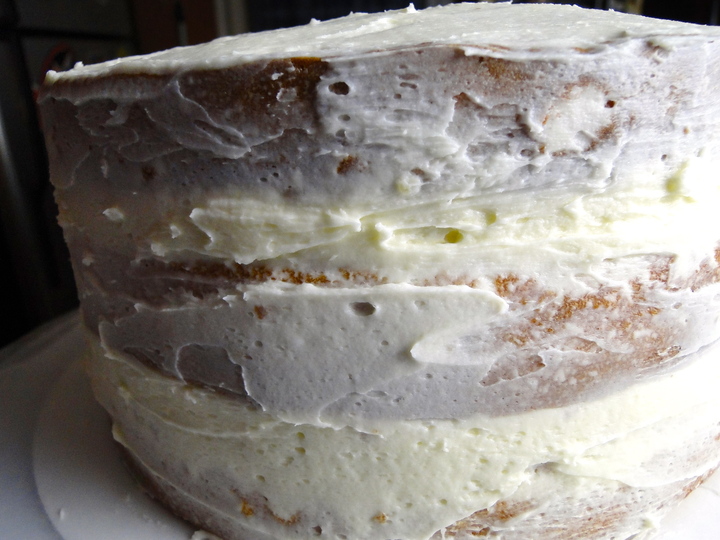
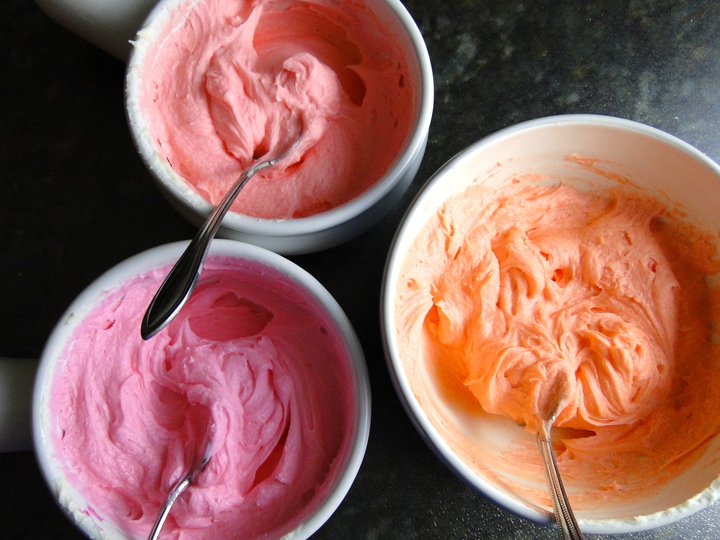
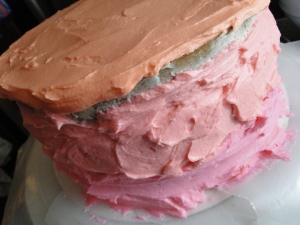
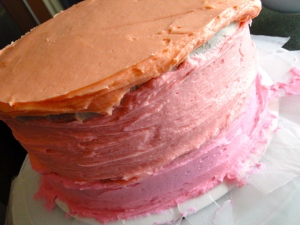




One thought on “Orange cream cake”
Comments are closed.